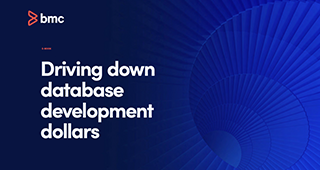As we welcome the new year, the BMC AMI Data product management team has compiled a list of the top 10 data trends for 2025. These trends represent the technological advancements as well as the shifts in priorities and practices that organizations need to adopt to remain competitive. Let’s dive in!
1. Growing regulatory demands will place increased emphasis on data security and recoverability
With new regulations like Europe’s Digital Operational Resilience Act (DORA) (effective January 2025) and New York State’s new mandates (later in 2025), the need for robust data security and recoverability has never been more critical. These mandates will require organizations to implement advanced tools and processes to ensure compliance while safeguarding their data. Solutions such as BMC AMI Recovery for Db2 ®, BMC AMI Backup and Recovery for IMS ™, BMC AMI Application Restart and VSAM Recovery, and BMC AMI Message Advisor for IMS™ automate recovery tasks to enhance resiliency and reduce operational risks. Tools like BMC AMI zAdviser provide insights to help organizations identify trends and improve management visibility, preventing system outages and ensuring compliance.
2. GenAI and its impact on data management will continue to expand
GenAI adoption shows no signs of slowing down. This technology is transforming multiple industries, ranging from creative content generation to software code creation and interface design. However, these advancements bring significant data management challenges. Organizations will need to handle growing volumes of complex data while ensuring data integrity, quality, and compliance. GenAI’s ability to create synthetic datasets enhances AI and machine learning (ML) model training without compromising sensitive data, making it a cornerstone of future data strategies.
3. The use of Java for modernizing mainframe applications is rising
As organizations seek to modernize their mainframe environments, Java is emerging as a popular choice for developing and modernizing applications. Java-based systems provide enhanced interoperability and scalability, making them ideal for accessing critical IBM® Db2® and IBM® IMS™ data. This shift is driving demand for advanced solutions such as BMC AMI Application Restart and VSAM Recovery, which automates restart tasks to minimize downtime and operational risks. By leveraging Java, businesses can streamline development processes, reduce downtime, and improve application performance, making it a key enabler of mainframe modernization.
4. AI/ML investments deepen across industries
AI/ML continues to revolutionize industries by unlocking new opportunities for efficiency and innovation. In 2025, organizations will significantly increase their investments in AI/ML technologies to address challenges such as fraud detection, cybersecurity, trading algorithms, customer service enhancements, and predictive patient risk modeling. Solutions like BMC AMI Datastream for IMS™ enable organizations to feed critical real-time and historical IMS data into analytics engines and security information and event management (SIEM) platforms, enhancing decision-making, system reliability, and business insights by analyzing raw organizational data to derive meaningful insights.
5. Streamlining and automating database changes in CI/CD pipelines is gaining momentum
DevOps methodologies continue to reshape mainframe operations, and the integration of database change management into continuous integration and continuous delivery (CI/CD) pipelines is becoming increasingly prevalent. By adopting solutions such as BMC AMI DevOps for Db2 ®, BMC AMI DevOps for Change Manager for IMS™ Jenkins Plugin, and BMC AMI SQL Performance for Db2 ®, organizations can automate and streamline database changes, ensuring greater speed, agility, and reliability. This shift-left approach reduces manual workload and errors, accelerating deployment and enhancing compliance with DevOps best practices.
6. Stream processing and analytics are taking center stage
Stream processing—the continuous analysis of data streams rather than batch processing—is becoming a critical capability for organizations. This real-time approach is vital for use cases such as fraud detection, real-time pricing in retail, supply chain tracking, GPS-based services, and equipment health monitoring. Tools like BMC AMI Datastream optimize data streams to improve efficiency, reducing operational costs while maintaining high levels of performance. This capability is becoming essential for organizations striving to stay competitive in dynamic markets.
7. Mandatory adoption of IMS-managed ACBs will reshape IMS operations™
IBM’s statement of direction regarding IMS™ management of application control blocks (ACBs) signals a significant shift for IMS database (DB) clients. Starting in June 2025, IMS DB clients must adopt IMS-managed ACBs to transition to the IMS 15.next release. Future IMS releases will also remove the generation processes for PSBLIB, DBDLIB, and ACBLIB, making the IMS catalog, SQL, and DDL the primary interfaces for IMS database management. These changes are significant, but there’s still time to prepare. Organizations should begin planning their transition now, with a goal of completing the migration by June 2025. BMC’s teams have extensive experience in IMS-managed ACB environments, ensuring full support for this transition. For more details, please see IMS-Managed ACBs Webinar Series—Transition with BMC AMI Data.
8. Increasing demand for IoT and IoE
The Internet of Things (IoT) and the Internet of Everything (IoE) are expanding at an astonishing pace. By 2025, the growing connectivity of IoT devices is creating immense volumes of data. IoE, which goes beyond IoT by integrating people, processes, and data, is unlocking new opportunities for innovation and operational efficiency. Solutions such as BMC AMI Cloud enable organizations to seamlessly manage and analyze IoT-generated data, enhancing decision-making and driving smarter operational strategies.
9. Addressing the mainframe skills gap through modern tools and partnerships
The mainframe workforce is undergoing a significant transformation, with younger professionals entering the field and experienced veterans retiring. To bridge this generational gap, organizations must adopt tools and interfaces that cater to modern user expectations while simplifying complex tasks. GUI-based solutions such as BMC AMI Database Administration for Db2 ®; BMC AMI Database Advisor for IMS ™, BMC AMI Change Manager for IMS ™, Catalog Manager for IMS, part of the BMC AMI Administration for IMS ™ solution; BMC DBA Toolkit and Console for IMS ™, and BMC AMI SystemAdministration for IMS™ Console help less experienced professionals effectively manage IMS and Db2 environments. Additionally, partnerships with educational institutions and initiatives to promote mainframe careers are crucial in ensuring the long-term success of mainframe operations.
10. Hybrid cloud models offer the best of both worlds
Hybrid cloud strategies combine the speed, reliability, and security of mainframes with the scalability and cost-effectiveness of the cloud. Solutions like BMC AMI Cloud provide adaptive automation to support these strategies. This approach simplifies modern data management by enabling seamless data migration and storage, protecting critical assets, and reducing operational costs through the replacement of costly and proprietary tapes/virtual tape solutions. These strategies also ensure compliance, minimize downtime, and enhance security against evolving threats.
Conclusion
The year 2025 marks a pivotal moment for mainframe data management. From the rise of GenAI and quantum computing to the continued evolution of DevOps and hybrid cloud models, the industry is poised for transformative growth. By embracing these trends and investing in innovative solutions, organizations can position themselves for success in an increasingly competitive landscape. The future is bright for those who are ready to adapt, innovate, and lead the way in mainframe data management.







